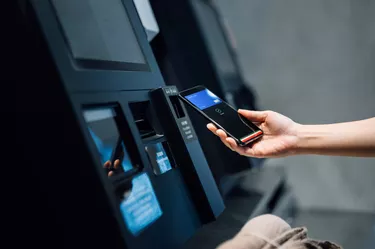
Savings bonds are investments of the United States Treasury. When you purchase a savings bond, you are lending the federal government the amount you pay for the bond. Over time, the bond increases in value.
When the bond recipient cashes the bond in, the U.S. Treasury pays you back for the loan with interest. Federal law prohibits banks from charging fees to customers for cashing in savings bonds, although customers may have to pay penalties if they cash the bond in too early.
Video of the Day
Video of the Day
Consider also: Is Interest on Government Bonds Simple or Compounded?
No Fees to Customer
Banks must pay a fee to the Federal Reserve Board for each treasury bond they cash within a calendar month. However, as of this publication, federal law prohibits banks from charging fees to customers if they cash treasury bonds at the bank. Thus, you should not pay any fees and in most cases should be able to cash the bond in for its current value if you visit a bank.
Penalty for Early Cashing
If you cash in a savings bond before the fifth anniversary of its purchase, you must pay a penalty for cashing in the bond too early. In this case, the bank must withhold the last three months of interest when it cashes in your savings bond. For example, if you purchase a savings bond in April 2019 and cash it in March 2021, you must forfeit the interest on the bond from January through March of 2021.
Prohibitions on Cashing Savings Bonds
Banks may not cash savings bonds for customers if the bond is less than one year old or, in the case of bonds that were issued before February 2003, less than six months old. If a person presents a bond for cashing prior to these deadlines, the banker cannot keep the bond nor charge a fee. He must give the bond back to the customer and advise the customer that the bond is not yet cashable.
How to Cash Savings Bonds
If you want to cash a paper savings bond, you should take it to the bank along with your photo identification. The name on your ID must match the name on the bond. If you have legally changed your name since receiving the bond, endorse the bond with both names; however, if your new name is substantially different from your original name, the teller may not be able to cash it. In these cases, you may have to send proof of your identity to the Federal Reserve Board.
If you are cashing a bond for a child under the age of 18, write your name and "parent of" the child's name. For example, "John Smith, parent of Jack Smith." Show your ID to the teller at the bank and give her the bond; she will cash it for you and stamp the bond so that it cannot be recashed before putting it in her drawer.
There are also electronic savings bonds available that get rid of the need to go to a physical bank for redemption. To cash these bonds, you'd use the Treasury Direct website and have the money put in your bank account.
Consider also: How to Cash a Savings Bond for a Minor